Have you got a social media marketing plan? Would you like to learn how to create one?
There is no question that social media is an effective and powerful tool for business and product content marketing. Everyone can now be found on Facebook or Twitter or both; and even those who proudly say they use neither can be influenced by friends and acquaintances who are active on social media. Either way, anyone living in a modern community can truly be reached by social media marketing.
The medium here is social media, but the basic principles of marketing are pretty much the same. There is still a target market, a product or service to be promoted, a brand name whose authority needs to be established, and even the necessity of an attraction or entertainment factor. Check all the 11 vital points of a successful social media marketing plan below…
1. Goals
First of all, you need to set goals for your social media marketing campaign. It is a given that you want to increase sales. Just pinpoint specific goals, like site products that you want to market and hope to sell more, or penetrate a new consumer group and expand your market.
2. The Target Market
It is the job of a social media marketer to come up with strategies that will make the brand become known and recognized among the target consumers. Aspiring to be universally popular is impractical, not to mention a solid way to waste financial and manpower resources. You don’t see Disney promoting its teen-oriented shows to channels showing WWE showdowns, do you? They advertise directly on their channel, at supermarkets, department stores and bookstores where children, young teens and their parents go all the time—their target market, in other words. Identifying your target market is one step closer to understanding their behavior, anticipating their needs, and using that knowledge to improve your business.
3. The Product/Service
It has been said before that no matter how worthless an object is, if it is advertised by a very famous celebrity or if a powerhouse marketing and advertising team works on it, then it will still sell.

That’s why it is the product/service itself that becomes the ultimate marketing draw. The social media marketer needs to know everything about the product or service they are promoting online. It’s more than about being able to answer questions about the features and nuances of the product/service. If marketers truly know what they are promoting, along with the knowledge of who their target market is, they will be able to figure out how to be effective at social media marketing.
4. Brand Recognition
It is possible for a business to be lucrative in social media alone, without any SEO activity. This isn’t applicable for every type of business or niche, but for some merchandise sellers, pastry bakers, freelance graphic artists and so forth, social media is all they need to run their respective businesses and earn an income.
One reason why these entrepreneurs and freelancers are successful at social media is because they are already recognized as the go-to for their respective specializations.They are recognized sellers and service providers. Their names have become their brands.
It is therefore critical for a social media marketer to be sociable, charming, and project a magnetic personality that will draw virtual strangers into trusting them.
On Technicalities and Execution
These four things are all excellent to look at on paper, but the execution can be more difficult. Researching your target market will take several days or maybe even weeks. Product/services development is usually out of the marketer’s control. This is especially the case with outsourced social media marketers. The most they can do is find the best positive qualities of the product/services and use them to put meat in the marketing campaign.
Here are some of the vital aspects of social media marketing that must be given much thought too…
5. Who will manage the social media accounts?
Find the right person for this task that entails writing engaging content, posting it, and discovering new strategies to increase engagement among your social pages’ followers. You could choose to do this in-house, for instance allocate this task to someone in your marketing team. You could even outsource this to a professional digital marketing agency, depending on your budget.
6. How many people are needed for managing the social media accounts?
This depends solely on the amount of effort you intend to put in – the number of posts you’d like to share daily, the number of social networks you’d like to focus on, etc. Of course, for innovation and discovering new ways to constantly keep engagement levels high, it helps if your social media accounts are managed by more than just an individual.
7. Which social media networks do you need to join? Will signing up in other social media sites aside from Facebook and Twitter still be beneficial to your business?
This step requires a wee bit of research. Find out what’s worked for your competitors and what hasn’t. However, don’t ape them in entirety. It’s possible that a particular social network hasn’t worked for your competitor because of a failed strategy, which you might be able to overcome. Spend some time getting updated on the latest trends in the social media space in general, and pertaining to your particular industry. Keeping yourself clued in on the latest trends helps you make a better informed decision on what social networks to start out with.
Also do a little bit of research to find out which of the social networks are most preferred by your target audience. Focus on the ones where most of your target audience can be found – this is the best way to ensure the maximum efficiency for your efforts.
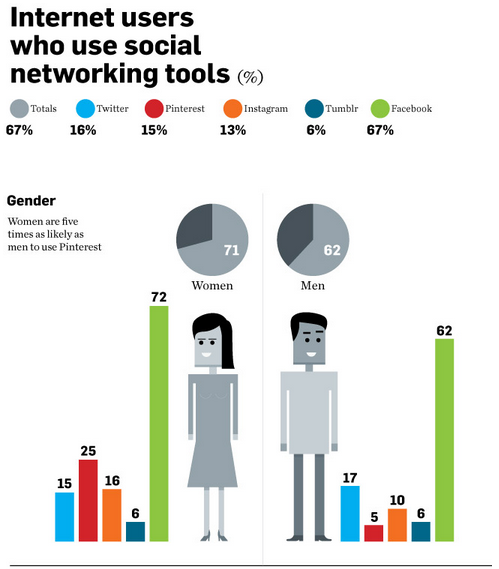
This infographic by Pew can help you with finding your social media target audience. It contains information on important details like age and gender.
8. When is the most appropriate time to post statuses, content, etc.?
Once you’ve identified your target audience and their favored social network, it becomes easy to learn when they are most active during the day. The time when most of your target audience spends online on the social network is the best time to post updates on your social accounts. Getting the timing of your posts just right is the key to getting maximum visibility, shares, likes and discussions.
.
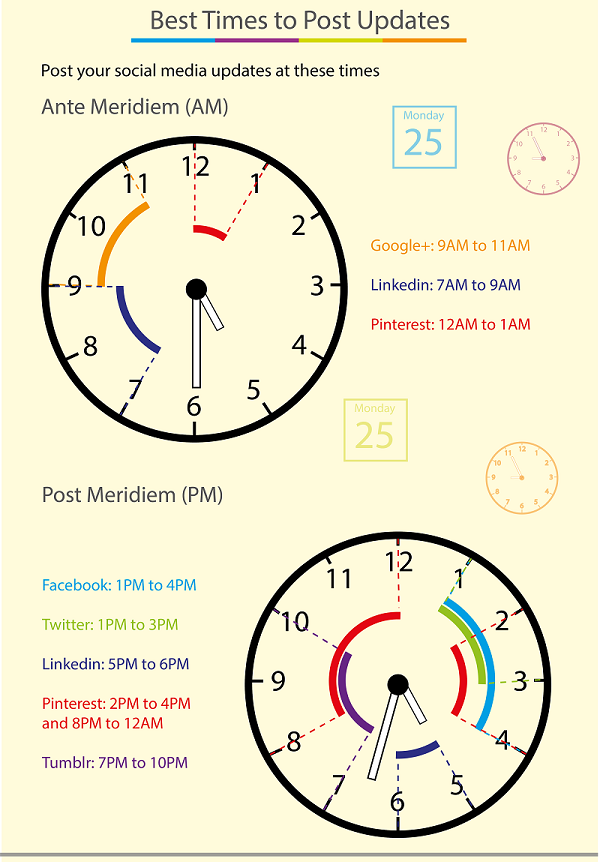
In the above image from the infographic Best and Worst Times and Days to Post Your Social Media Updates you can see the best times at which to post your social media updates. To learn about the worst times and the best days and times read the rest of the infographic.
9. How many posts per day? Is there going to be a minimum number of posts?
Establish the frequency of posting on your social accounts. Of course, some days you might have a lot of information to share with your followers, and some days would be quite slow. But if you can fix a lower limit on the number of posts you’d like to share each day, you’ll be able to work out a better plan for your social media marketing efforts.
It helps to share at least 1-2 posts every day to remind your followers, fans, etc. about your brand, but be careful not to overdo it and turn people away from you too.
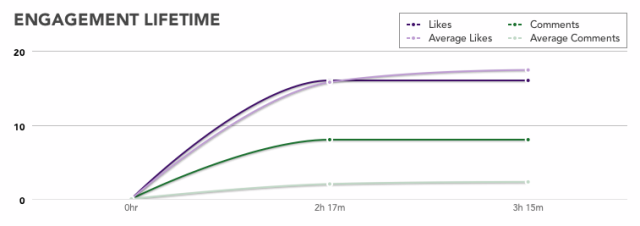
How many ever times you post a day, make sure you wait for each post to reach its engagement lifetime. For e.g. the engagement lifetime of a Facebook post is about 3 hours as you can see in the graph above.
10. What types of posts should you prepare?
The kind of posts you’d like to share with your audience depends on the kind of information that you are aiming to offer them. If you’d like to share promotional posts, visual content is the way to go. Think images and videos that your followers can see, instead of texts that they would have to read through.
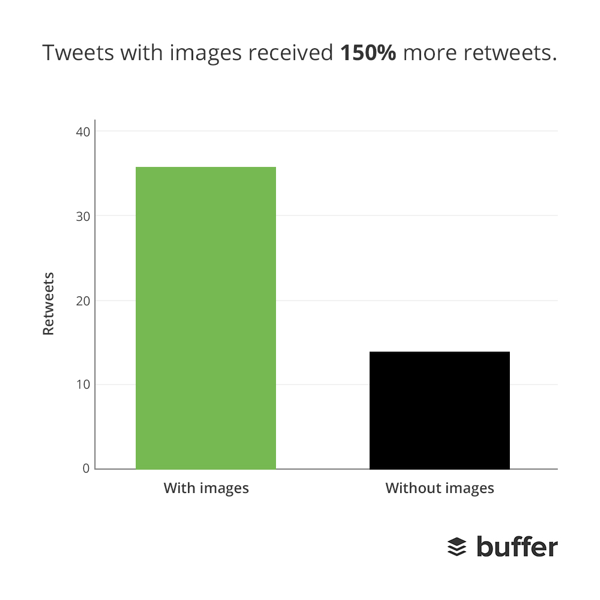
Images also tend to perform better on social media. As seen in the above graph images on Twitter drive 150% more engagement.
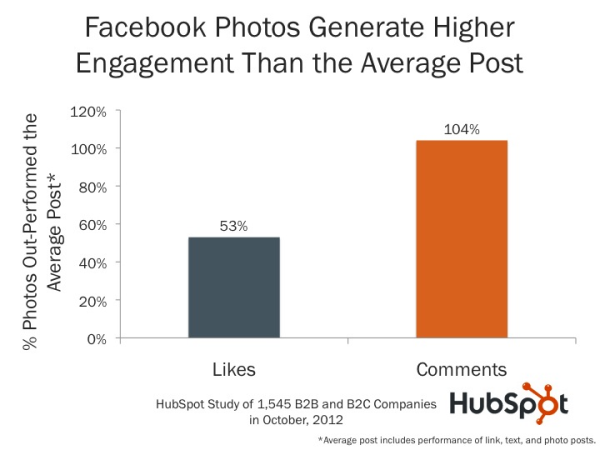
Images also drive more engagement than the average post on Facebook as seen in the above graph from Hubspot. For official announcements about your business, it’s best to share links to your blog posts or website pages. These are more formal than visual content and help convey a more serious tone.
11. What approach or tone of voice will you use for your social posts? Friendly and casual, or highly formal? The tone that you choose for your post again depends on the kind of information you’re sharing. For instance, promotional content would do well with light-hearted, casual language, while official announcements regarding your business could be shared with a more formal, business tone.
Expect that more points of concern will make it to your priority list as the campaign proceeds. The examples above are merely the aspects of social media marketing which must be decided on before a campaign is begun.
Did I forget listing any other vital points of a social media marketing plan? What steps do you follow while creating a social media marketing plan? Please leave your comments below.
About Emma-Julie Fox
Emma-Julie Fox writes for Pitstop Media Inc, a Canada based SEO services company that has helped several businesses across North America increase their organic search visibility. You can follow her on Google Plus.
